

Published on: 06/25/2025
This news was posted by Oregon Today News
Description
Every summer, the Oregon Country Fair throws a party that might make you think the 1960s never ended.
It’s an outgrowth of the counterculture movement that rejected consumerism and war and embraced peace and love. These values can seem quaint in the 21st century. But for the Oregonians who continue to organize the annual festival, that utopian vision is as relevant as ever.
The Oregon Country Fair takes place in Veneta on July 11-13 from 11 a.m. to 7 p.m. For more information, visit oregoncountryfair.org.
Suzi Prozanski, author of the book “Fruit of the Sixties: The Founding of the Oregon Country Fair,” credits the “peace and love” ethos for the enduring legacy that gave rise to and continues to fuel “the fair,” now one of the longest-running arts and culture events in the United States.
“There was protest alongside fun and play and creativity and the feeling that there is a way we could live differently and take care of each other better,” Prozanski said.
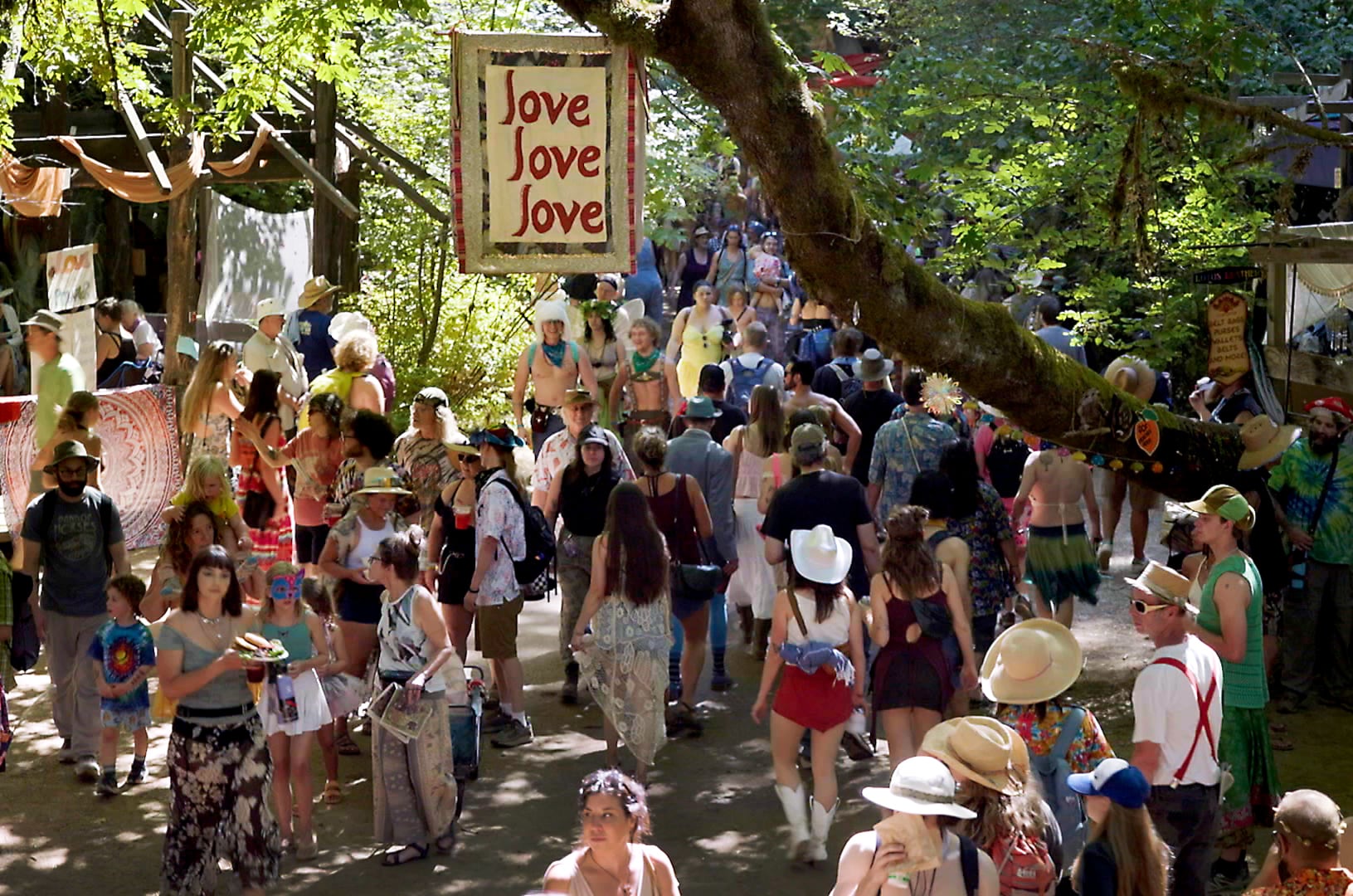
That’s been the spirit behind the Oregon Country Fair since it started in 1969 in Veneta, just west of Eugene. Along with the fun and play, the fair community shared a unique kind of conservatism that focused on natural resources and the environment.
Today, the U.S. Forest Service has “leave no trace” regulations, and many cities and towns have government-run curbside recycling programs. But in the late ‘60s, these ideas were considered strange at best. So, how has this jangly community of fun-loving anarchists with a deep mistrust of central authority managed to throw a huge festival while treading lightly the same, park-like land for more than half a century?
Early fairgoers experimented with “fringy” ideas such as organic gardening, generating electricity from the sun and low-impact practices such as recycling bottles and cans. It took mainstream society about 50 years to catch up, but now recycling, composting, reducing waste and generating renewable energy are widely embraced.
“Part of that whole ethos at that time was the back-to-the-land movement and just having a good time helping people,” explained longtime fair volunteer DJ Rogers. “As a result of that, they stood up and said, ‘We really ought to walk a good path.’”
According to Rogers, the free spirits who started the Oregon Country Fair were early adopters of what is now popularly known as “leave no trace.”
“Pack it in, pack it out, do what you can to not damage things, and to try and carry forward the values of reuse, recycle and only discard when you absolutely have to,” Rogers said.
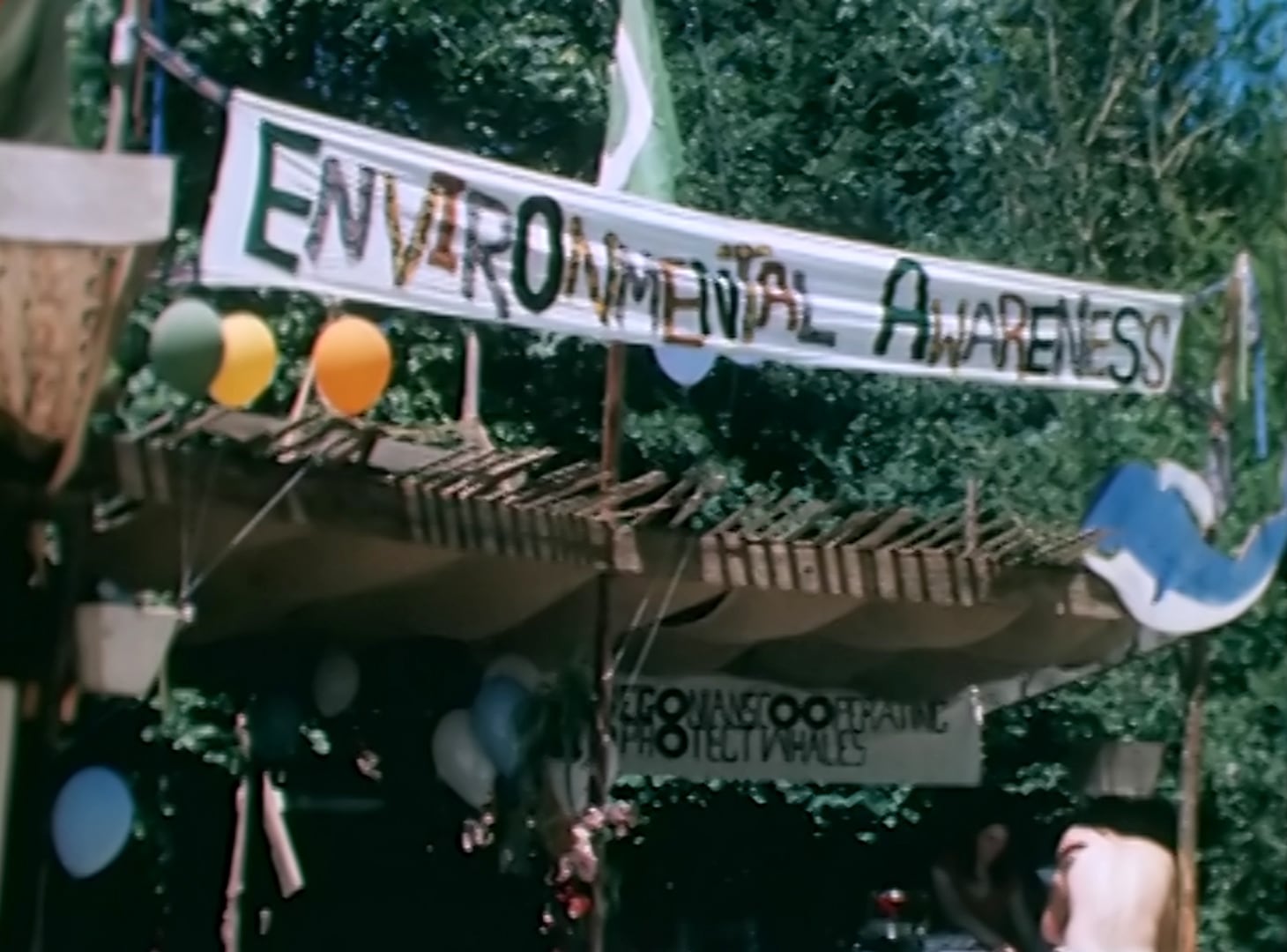
“These were things they were thinking about early in the development of the fair,” said Oregon Country Fair Event Manager Mark Malaska, one of a handful of full-time staff among the thousands of volunteers who put on the fair each year.
The proving ground for the fair’s approach to land stewardship can be seen on the 500 acres where the fair takes place.
“As people return after decades to the fair, things here relatively stay the same,” Malaska said. “It shows that we can have a low impact on the land while still having fun and having our big, giant party. And I think the fair had a big part of bringing that consciousness to the mainstream.”
Walking the talk
Amy Hand, a coordinator for the fair’s recycling crew, said the people who created the fair did it with the goal of caring for the land.
“And so we’re really picking up where that energy began and carrying it forward,” she said.
Hand is one of nearly 200 volunteers who take on the Herculean task of processing all the waste generated by the fair’s 35,000 visitors.
“We try to the best of our ability to make sure we reclaim as much as we can and use the landfill as little as possible.”
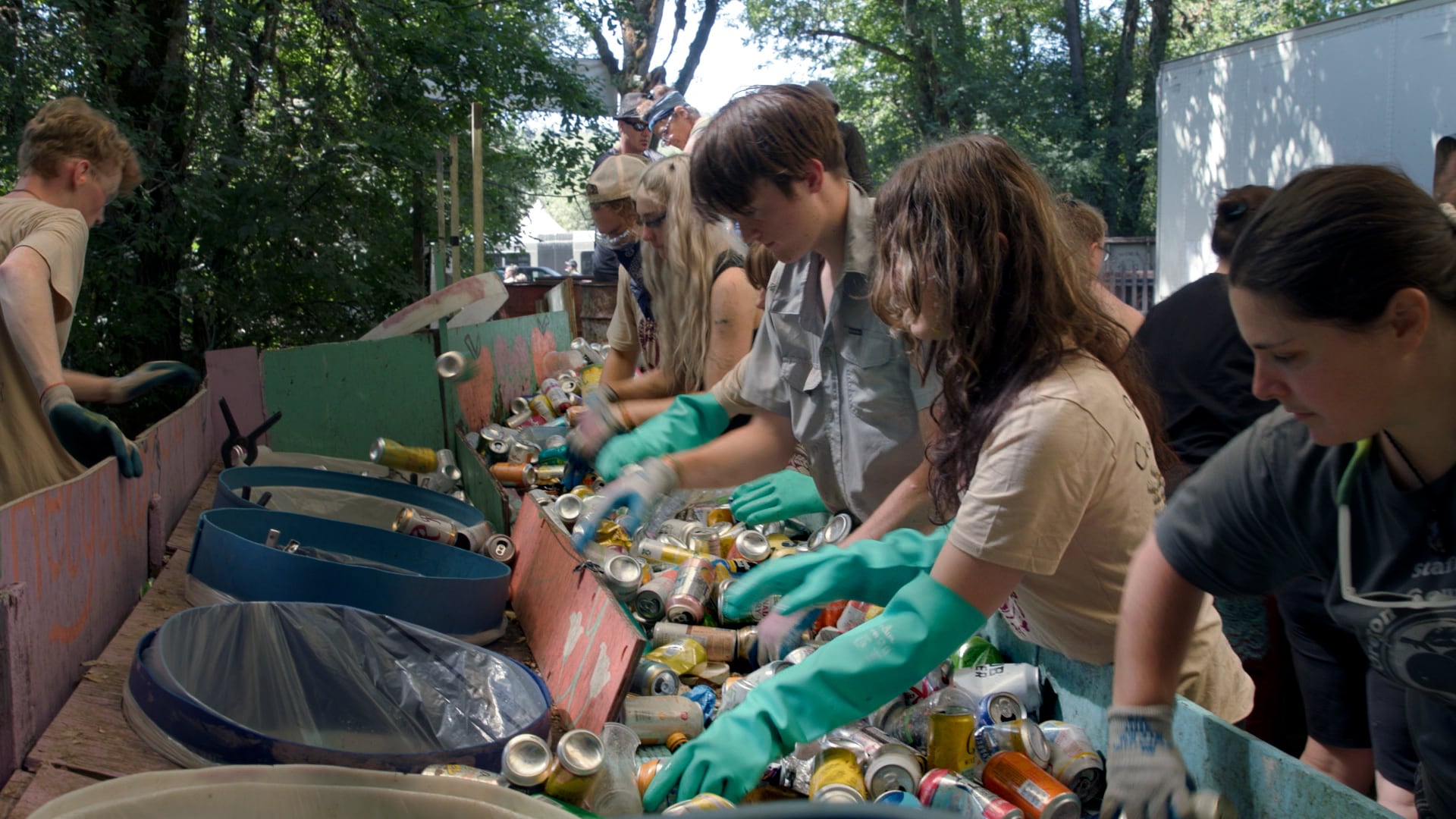
To manage it all, Hand and her crew stage collection barrels around the fair site. Barrels for “recyclables,” “refundables,” “compostables” and “landfill” stand in clusters alongside buckets for the reusable flatware all food vendors are required to use.
“Trash clowns” spend their afternoons standing around the collection sites playfully directing visitors as to what goes where.
Once collected, the recycling crew sorts the contents of each barrel by hand. The work is hard and dirty. But sustained by a raucous soundtrack, the all-volunteer crew dives into it each morning of the three-day weekend — and after the event ends — with the energy of a dance party.
Last year, the fair’s recycling crew processed more than 185,000 refundable containers, 12 tons of recyclables and nearly 30 tons of compost. The event also generated 23 tons of trash that went to the landfill, an amount which was down from 30 tons in 2023.
“We see that number really shifting as we get more compliance with our compostable service ware and things are going into the right places,” Hand said.
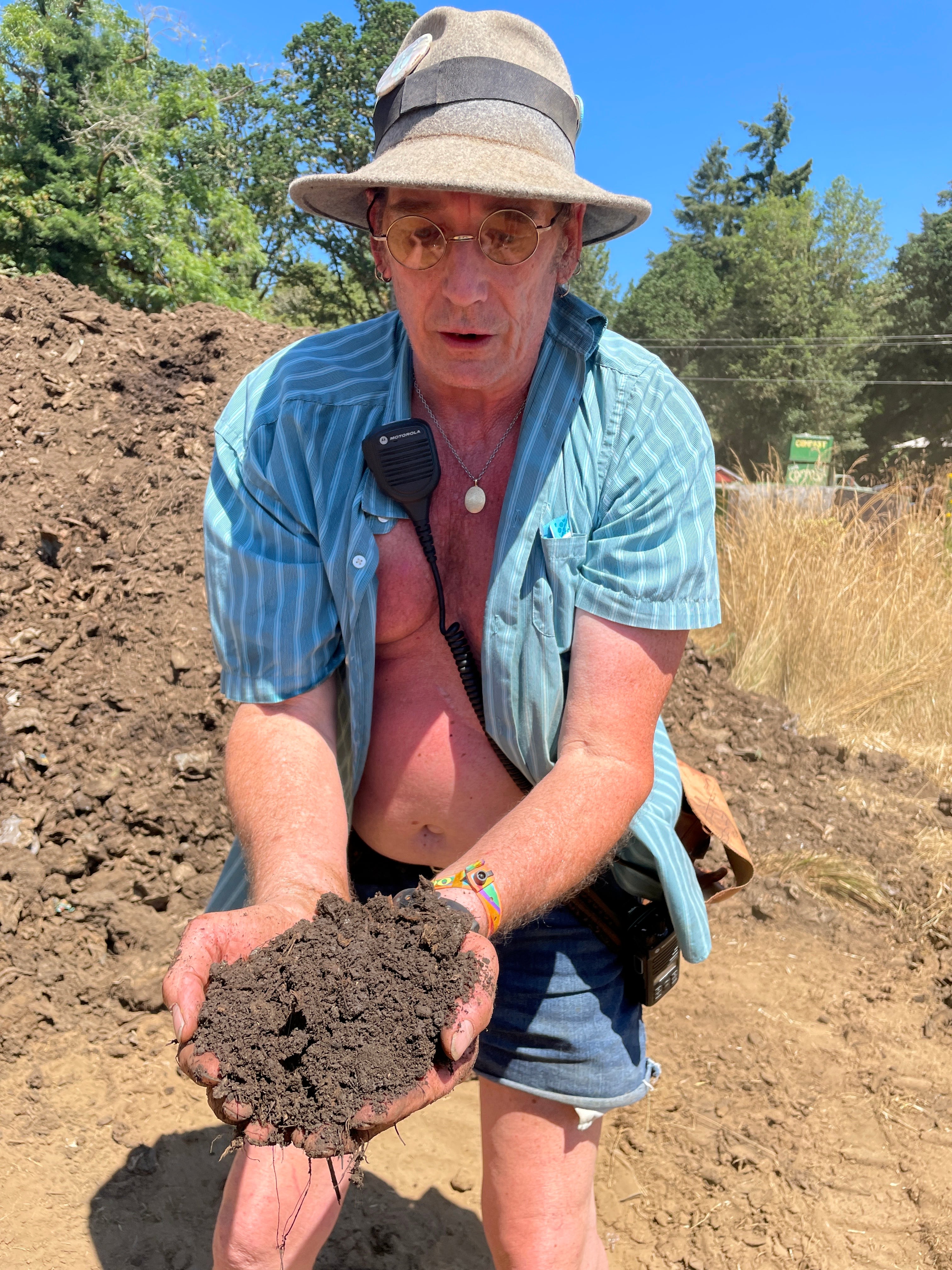
For her, the numbers are important because they don’t lie.
“Nobody wants to hear you talk about it. They want to see you do it,” she explained. “And I think we’ve demonstrated over the years that, yeah, we might be a bunch of hippies hanging out in the forest, but I feel like the organization and our volunteers walk their talk in a lot of ways.”
Reverence for the land
During the three-day fair, hundreds of craftspeople and food vendors sell their wares from rustic booths. Circus performers dangle from the trees and vaudevillians juggle knives and flaming torches. Tens of thousands of visitors stroll and dance and swoon with the seemingly endless parade of dazzling spectacles.
But other than the few weeks leading up to the July fair, the woods where it takes place are as quiet as any natural area. The beguiling calls of Swainson’s thrush echo through the understory of vine maple and salal beneath a thick canopy of Oregon ash, white oak and Douglas fir. During the idle months, the rustic wooden booths from which fair vendors sell food and crafts appear eerily empty and half-assembled.
“We try to let it return to more of a wild area when we’re not on the land instead of having the infrastructure be the main focus,” Malaska explained. Fair vendors are asked to partially deconstruct their booths right after the fair.
“We do this so the light can hit the ground, so that the wildflowers bloom again, the rain can reach the forest floor and things can rebound quickly,” he said.
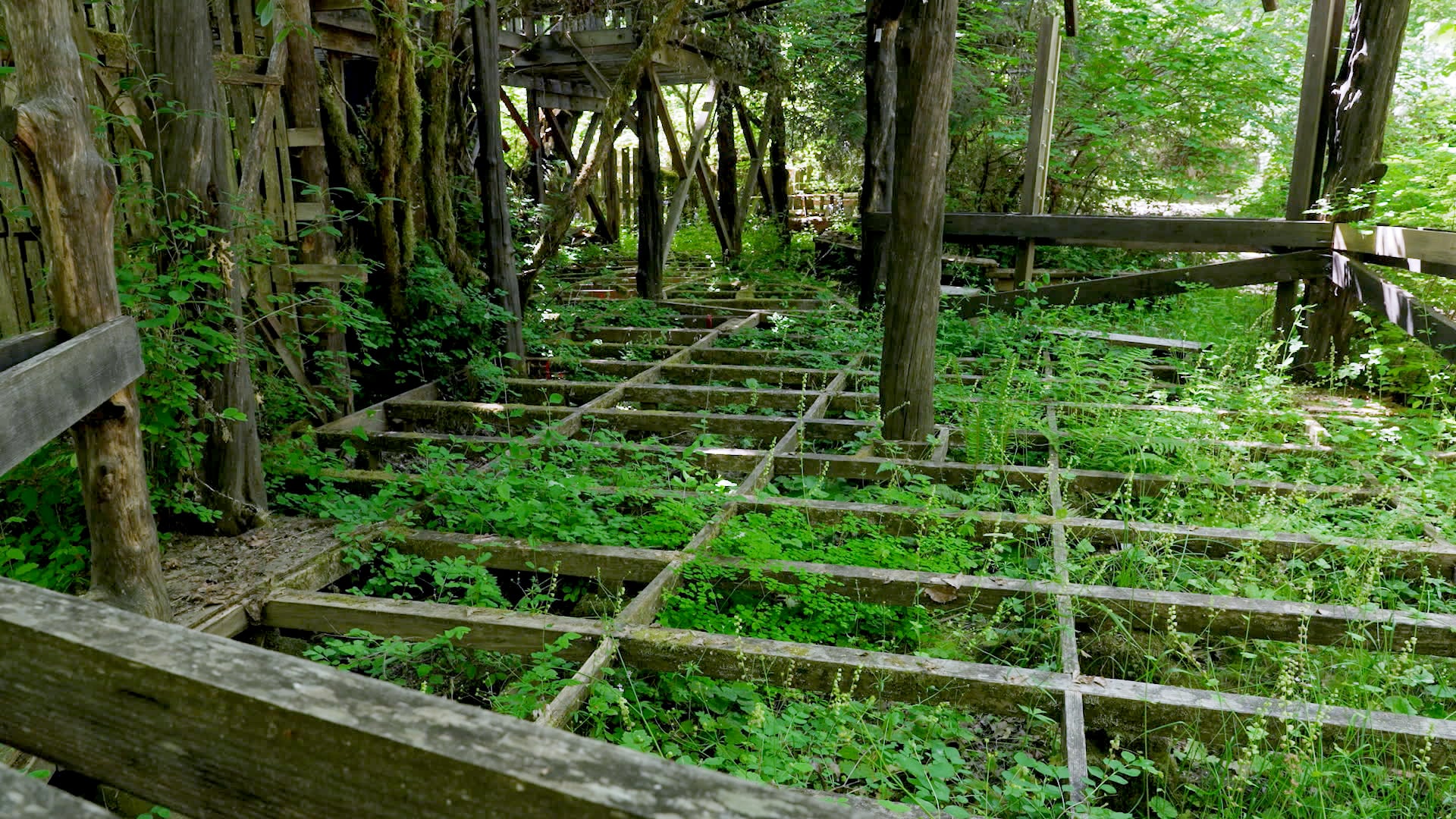
One of the volunteer groups directly involved in preserving the land where the fair takes place is the “VegManEC” crew. The playful acronym stands for “Vegetation Management and Erosion Control.”
“Basically, the fair is a growing organism, and as a living thing, its tendency is to grow. But left unchecked, we would tear this place apart,” explained VegManEC coordinator Glenn Gregorio. “Our crew is tasked with maintaining the balance between the park that we create during the Country Fair and the natural wilderness that we want to maintain.”
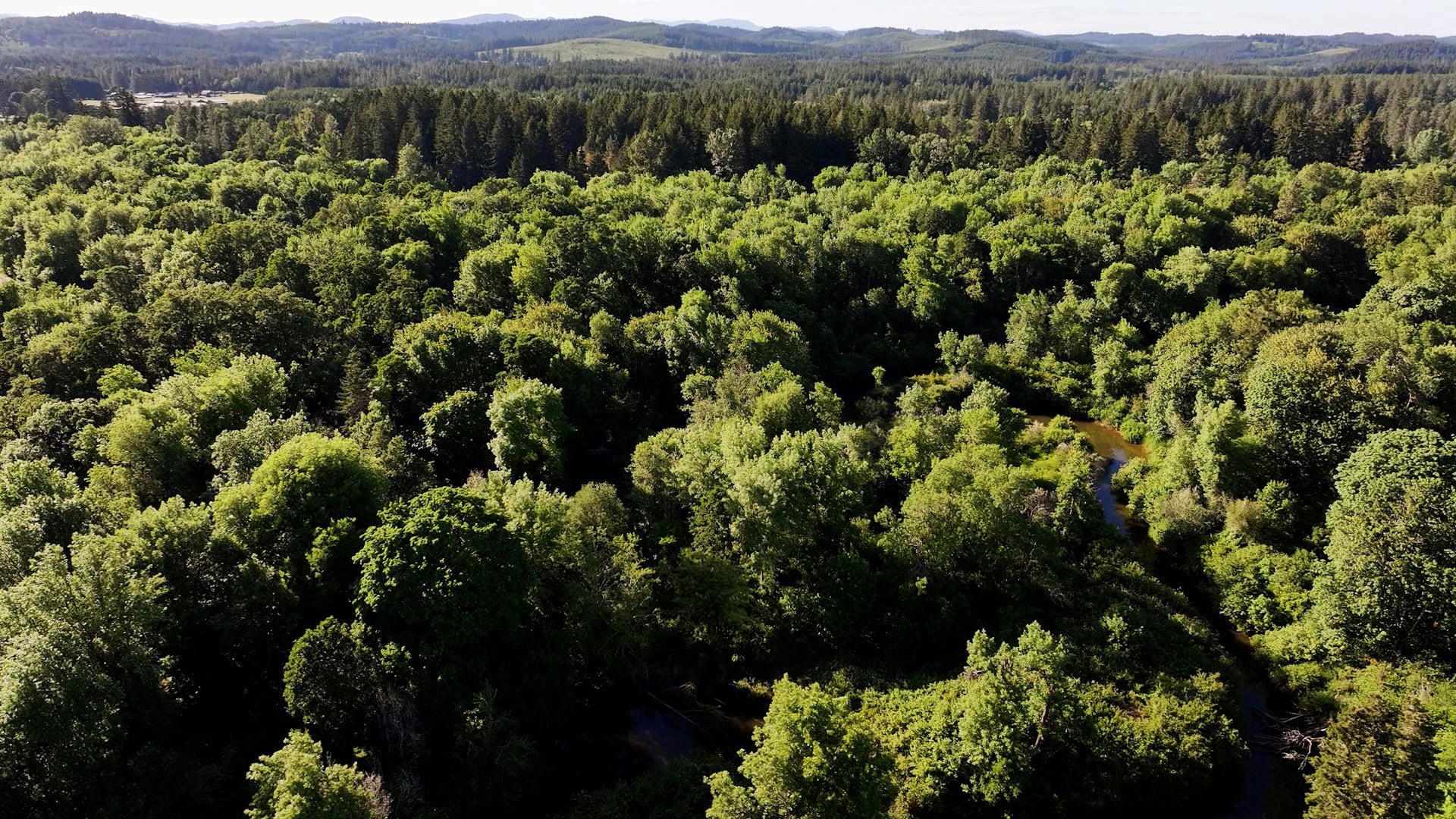
In practice, that can be as simple as preserving shade by tying back tree branches that block the path instead of cutting them. But it’s also as complicated as mitigating the potential impact of thousands of visitors.
For all of these tasks, Gregorio’s crew uses a single guiding principle.
“We want to preserve the space so that people can enjoy it in the future,” he said. “So, in anything we’re doing, what we have to do is ask, ‘Am I expressing reverence for the land?’ And at some level, reverence for the land to a VegManEC puts us at odds with the priorities of the fair.”
Beyond just saying ‘no’
Whether it’s restricting access to an area where a bird is raising young or prohibiting campers from cutting foliage that might be inconvenient to erecting a tent, the VegManEC crew is one of the fair’s few volunteer groups that has the authority to say “no.”
“We’re a ‘no’ team,” Gregorio said. “But I think I’ve gotten to a point in my life where I don’t believe in a ‘no’ team. It’s rather ‘not that way.’ Or ‘not this way; We can do something but not that.’”
Naturally, these encounters sometimes go sideways, and Gregorio admits to having mishandled many interactions. But looking for solutions that preserve the land and that everyone can live with is still the goal.
“Nobody wants to walk away from the situation, angry, right?” he said. “So it’s going into people’s space and saying, ‘I hear what you want. I can’t do that. This is what I can do. Can we make it work? No? How about this?’ And then you work through it. It’s continual. It’s about continual growth.”
‘Fair family’ values
Regardless of the disagreement, Gregorio said, he looks for the solution in the fair community’s fidelity to shared ideals and dedication to doing things differently.
“Basically, we’re an intentional family and this is our home. It’s a microcosm of trying to live our values. And we practice it here so that we can bring it to the outside world,” he said.
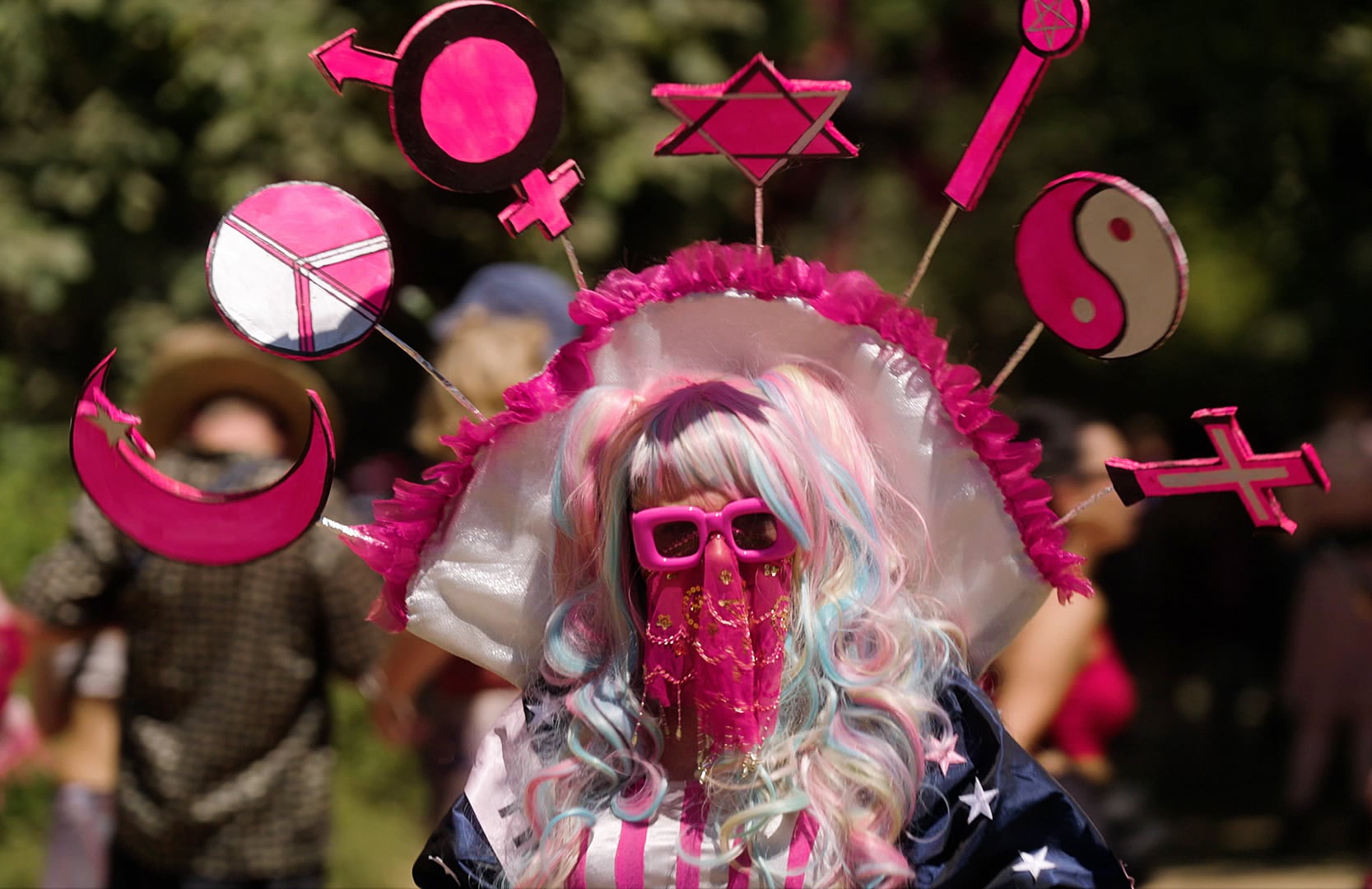
For Gregorio and his “fair family,” the vision of the 1960s counterculture has endured because everyone still holds the values Prozanski identified as hallmarks of the ‘60s: creativity, play and a desire to manifest a different way of life that includes taking care of one another.
“We’ve got problems all over the place. But we recognize that if you don’t deal with it right now, you’re going to have to deal with it another way tomorrow,” Gregorio said. “We don’t have to agree on everything, but we’re gonna watch out for each other and keep working through our issues because there is no other way.”
Fair volunteers like Gregorio hope this civil, solutions-oriented approach to settling disagreements is something else American society might eventually embrace.
This story was written and reported by Jule Gilfillan, edited by Cassandra Profita, digitally produced by Meagan Cuthill, with photos by Jule Gilfillan, Dan Evans and Jeff Kastner.
Since 1969, the Oregon Country Fair has been a tradition in Oregon. This week, OPB presents a five-part look at the fair’s history, art, environmentalism, music and overall unique legacy.
News Source : https://www.opb.org/article/2025/06/25/oregon-country-fair-location-land-environmentalism/
Other Related News
06/25/2025
Green Day was playing the Hurricane Festival in Scheeel Germany on Sunday when lead singer...
06/25/2025
The case has led frustrations to run high in Okinawa where the US continues to have a heav...
06/25/2025
A fan who heckled Arizona Diamondbacks second baseman Ketel Marte during a game against th...
06/25/2025
OK stop talking Close your eyes What do you hear
06/25/2025







